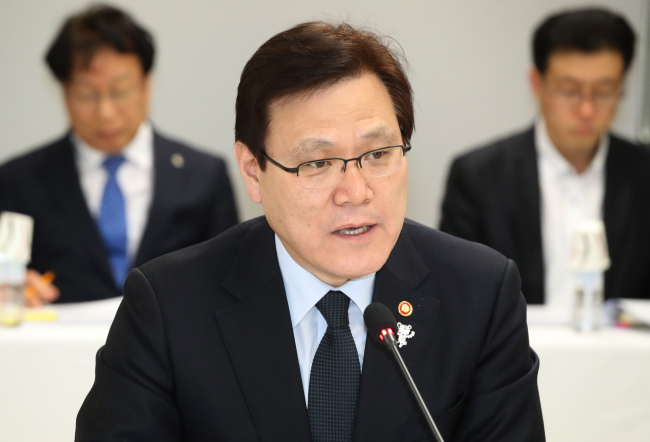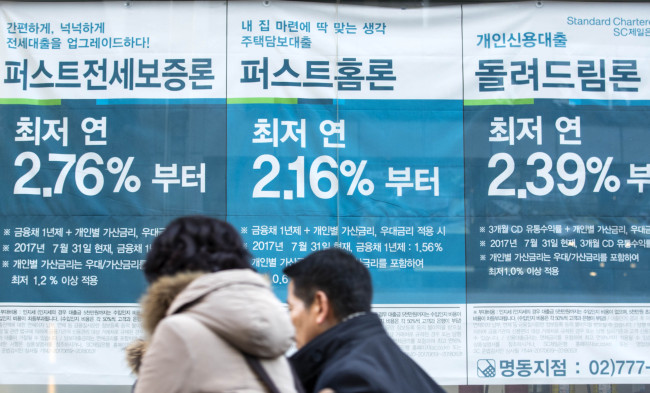South Korea’s Financial Services Commission said Thursday it plans to circulate a combined 11.2 trillion won ($10.6 billion) this year for local retail borrowers that hold midrange credit scores while having trouble finding corresponding loans.
The FSC pledged to pour a combined 8 trillion won into state-run loan products sold at banks, including those designed for refinancing. The remaining 3.2 trillion won will be spent to encourage private banking institutions to develop and sell midrange loan products this year, and the volume of support is expected to gradually increase, according to the plans.
By 2022, the government’s annual financial support for five commercial banking groups -- Shinhan, KB, KEB Hana, NH and Woori -- will increase by 2.5 times to 2.4 trillion won from 2017, according to the plans. Direct banks Kakao Bank and K Bank received 900 billion won in 2017, and the volume will increase by 3.5 times to 3.1 trillion won in 2022.
Such government measures to help bridge the financial gap among its people are expected to come in line with a plan to reduce maximum interest rates to 24 percent from the current 27.9 percent, starting Feb. 8.
 |
FSC Chairman Choi Jong-ku (Yonhap) |
Choi Jong-ku, chairman of the Financial Services Commission, called the state financial support a “light foothold” to tackle ordinary people’s financial troubles, in a speech Thursday.
He also expected a 350 billion won decrease in borrowers’ total volume of repayment for loans.
Other than the state-led financial support, a body joined by financial institutions and the watchdog has been preparing to share information to better rate credit scores of some 700,000 retail borrowers, according to Choi Joon-woo, director-general of the consumer finance and protection bureau at the FSC.
Korean borrowers holding midrange credit scores of between 4 to 6, on the scale of 1 to 10, have been finding it hard to take out loans at midrange interest rates. They are often faced with few choices but to turn to loan products with interest rates of over 20 percent by nonbanking financial institutions. Korean banks had offered consumer loans exclusively for those with credit scores higher than 3.
As of November 2017, commercial lenders’ average interest rate for consumer loans came to 5.1 percent, while those of savings banks and hard money loan providers reached 25.4 percent and 21.6 percent, respectively.
Korean law stipulates that a loan product sold at an interest rate of 18 percent or lower, with 70 percent of the entire product offered to those with credit grades at lower than 4, is considered a midrange loan product.
 |
Pedestrians walk past posters promoting a bank's minimum interest rate for consumer loans available. (Yonhap) |
Experts like Kim Jung-sik, an economics professor at Yonsei University, hailed the government-led move to achieve financial inclusion.
“An adverse effect from the increased government spending could be overwhelmed by positive effects from bringing the financial status of indebted consumers back to the norm,” Kim told The Korea Herald.
To improve the repayment rate of policy loans, an overhaul in the credit rating model should precede, so that youths eager to be employed and repay loans can have more opportunities for the loans, Kim added.
Meanwhile, the FSC excluded the local peer-to-peer lending industry from the government plans, citing insufficient data on their loan products compiled by the authorities.
By Son Ji-hyoung
(
consnow@heraldcorp.com)








![[Today’s K-pop] Blackpink’s Jennie, Lisa invited to Coachella as solo acts](http://res.heraldm.com/phpwas/restmb_idxmake.php?idx=644&simg=/content/image/2024/11/21/20241121050099_0.jpg)
